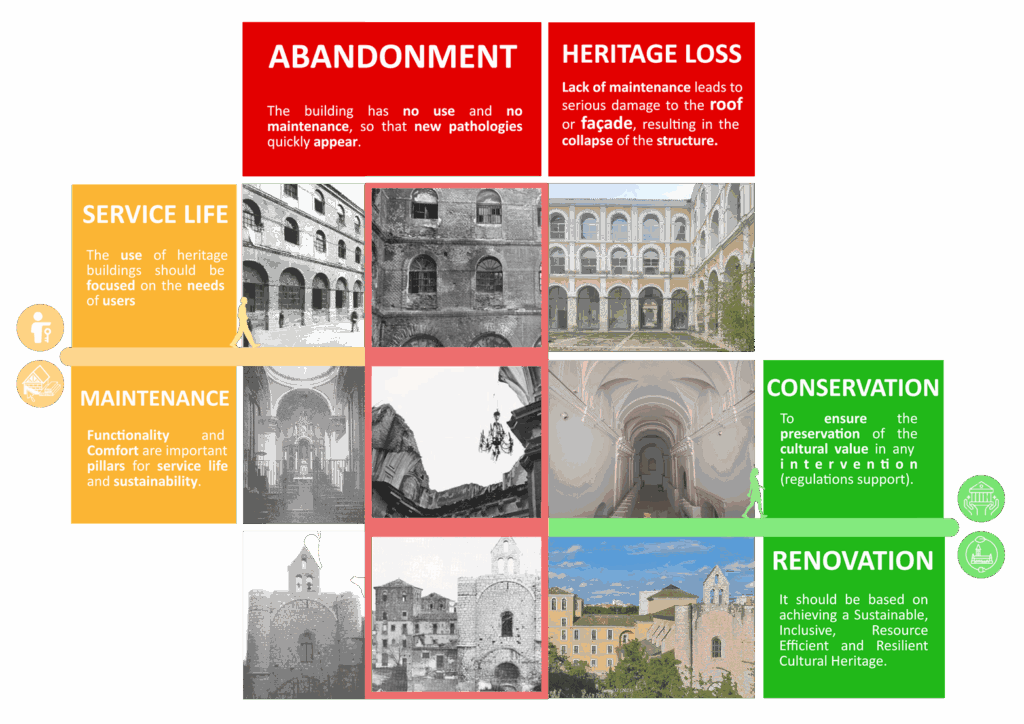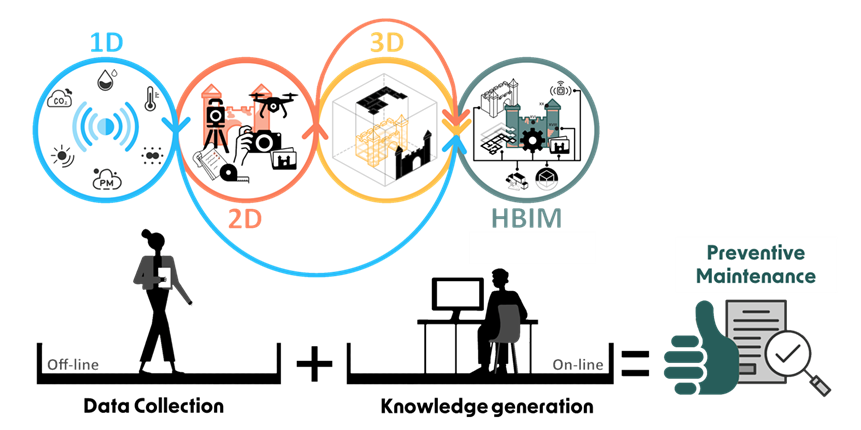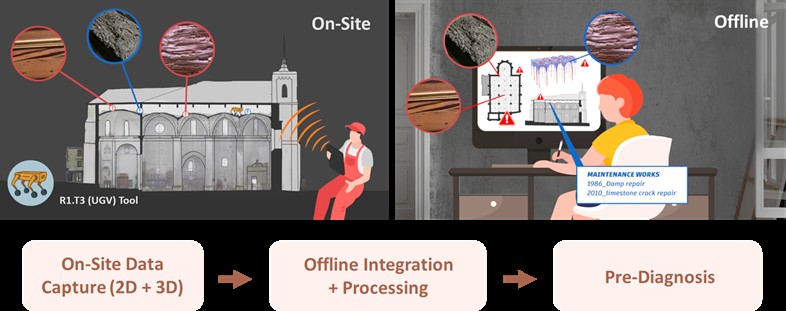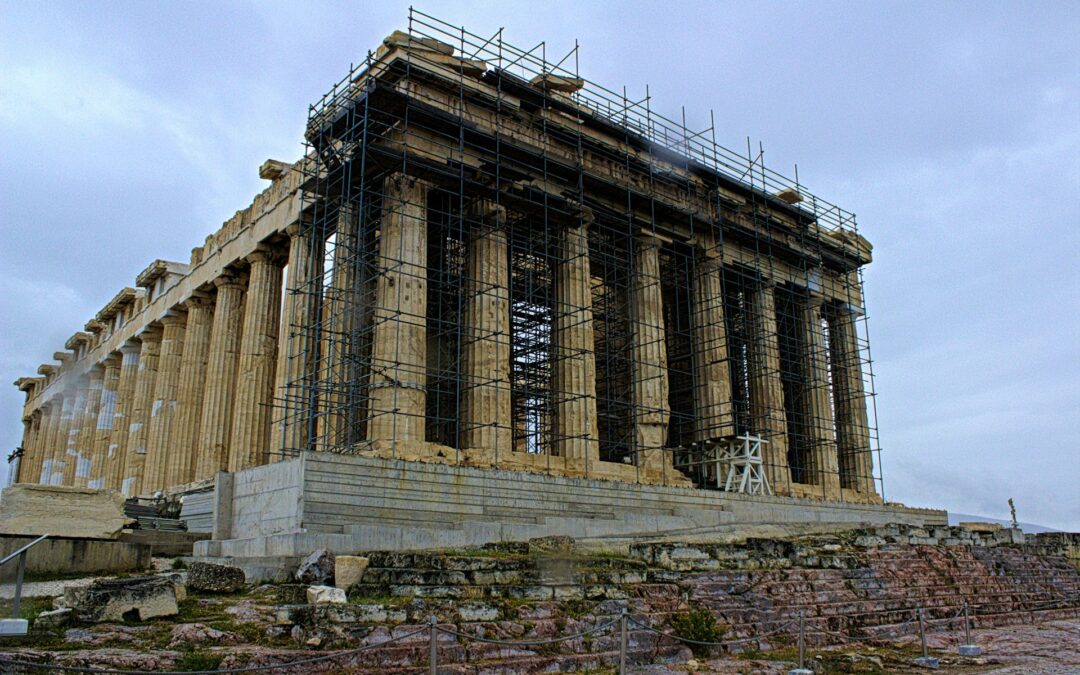Beneath the vaults of a Gothic church, within the thick walls of a Cistercian monastery, in the stucco of a Renaissance palace or the rammed earth and timber frames of a traditional house, a single truth emerges: built heritage is an essential part of our history and collective identity. It is a physical legacy made of stone, wood, lime, brick or raw earth, conceived with construction wisdom adapted to its time.
Today, however, many of these buildings are deteriorating, left empty, and, far too often, disappearing without ever having been given a second chance. The lack of contemporary use, societal passivity, the absence of maintenance plans, the associated costs and, above all, something rarely discussed or deliberately overlooked: a technical misunderstanding of how they were built, are accelerating their loss.

How can we preserve what we don´t understand? How can we maintain with sound judgement if we ignore how something was built, why specific materials were used, or what structural logic underlies it? Preventive conservation is not a trend, it is an urgent necesssity if we want to safeguard our cultural heritage with rigour and responsibility.
At CARTIF, we believe it is essential to research and develop technical, innovative, yet realistic and implementable solutions that address this challenge through knowledge and respect for what has already been built. We aim to contribute to a smarter, more useful conservation approach, one that avoids improvisation and standard formulas, and instead promotes a deep understanding of how things were constructed, in order to care for them better. We are convinced that heritage conservation is a collective process: a way of valuing what connects us, engaging citizens, and reinforcing our bond with the built environment.
Projects we have been involved in, such as INHERIT and iPhotoCult, support this vision and underscore the need for a new technological perspective on heritage conservation. We already explored this line of thought in our blog post “A proper approach to inspecting historic buildings”; if you’re interested in digging deeper, we recommend giving it a read.
Why can´t we apply the same criteria userd for contemporary buildings?
Historic buildings do not follow the rules of modern construction. Their materials, lime, brick, stone, wood, earth, are porous, natural, and adapted to local climates and contexts. Their construction systems, load-bearing walls, vaults, timber roof frames, obey a different logic. Assessing them using the same technical criteria as reinforced concrete or steel buildings is not only incorrect, it’s unjust.
We need tools that speak the language of built heritage. A specific approach that values their unique technical nature, because constructive diversity is not a problem, it’s a valuable asset.
A technical proposal for knowledge-based conservation
Today, many diagnostic inspections still rely almost exclusively on the expertise of the technician conducting them. While that professional judgement is valuable, even essential, it becomes insufficient if the data gathered is not structured in a consistent, traceable and useful way for follow-up actions such as maintenance planning, rehabilitation, or risk assessment.

That’s why we believe it is crucial to open the debate and move towards the development of a methodological proposal that addresses the specific needs of this field, through clear technical criteria and a systematic approach that enables us to:
- Identify and evaluate historical construction systems according to their own internal logic.
- Detect and structure deterioration symptoms by technical domain (foundations, structure, façades, roofs, interior partitions and finishes, metalwork and joinery, accessibility, installations and smart systems).
- Assess associated risks, whether physical, functional or environmental.
- Generate structured, reusable data that can be connected to digital tools such as H-BIM models or maintenance platforms.
This approach does not aim to simplify through standardisation, but to intelligently unify technical criteria through consensus among professionals, adapting to different contexts and typologies while respecting the architectural and cultural diversity of the built heritage. It remains fully aligned with current regulatory frameworks, such as the UNE 41805 standard for building diagnostics, and takes as a reference the National Preventive Conservation Plan of Spain’s Institute of Cultural Heritage (IPCE).
What are the benefits of a well-designed technical tool?
Adopting a technical methodology adapted to heritage buildings offers tangible benefits for technicians, companies and public administrations alike:
- Reduced medium- and long-term costs by avoiding emergency interventions.
- Greater transparency and traceability through structured, comparable data across buildings.
- Enhanced appreciation of traditional technical knowledge, acknowledging the logic and effectiveness of historic systems and materials, while also addressing professional niches that currently lack recognition.
- Real support for decision-making without replacing professional judgement.
- Seamless integration with digital models and H-BIM platforms to plan maintenance, evaluate deterioration risks, monitor material ageing or assess energy performance (when appropriate).
These tools are key to achieving a more useful and proactive form of management, enabling better planning, fewer interventions, and more effective conservation, helping us move towards sustainable, resilient, resource-efficient and ultimately cost-effective heritage.
Looking ahead: meaningful digitalisation
The potential of this approach does not end with inspection or diagnostics. It opens the door to digital tools capable of integrating 3D models, geolocated imagery, environmental or structural sensors, and lesion monitoring systems, or even AI-based tools capable of predicting deterioration patterns.

But none of this will be useful without a solid foundation: reliable, technically sound and well-structured data. Because technology alone doesn’t preserve buildings. It’s people, with sound judgement, supported by tools that respect and understand what has been built.
Built heritage is not merely a collection of old stones. It is a living expression of our identity, our way of inhabiting space, our craftsmanship, our decisions and our memory. And today, more than ever, preserving it is a way of taking care of ourselves as a society.
